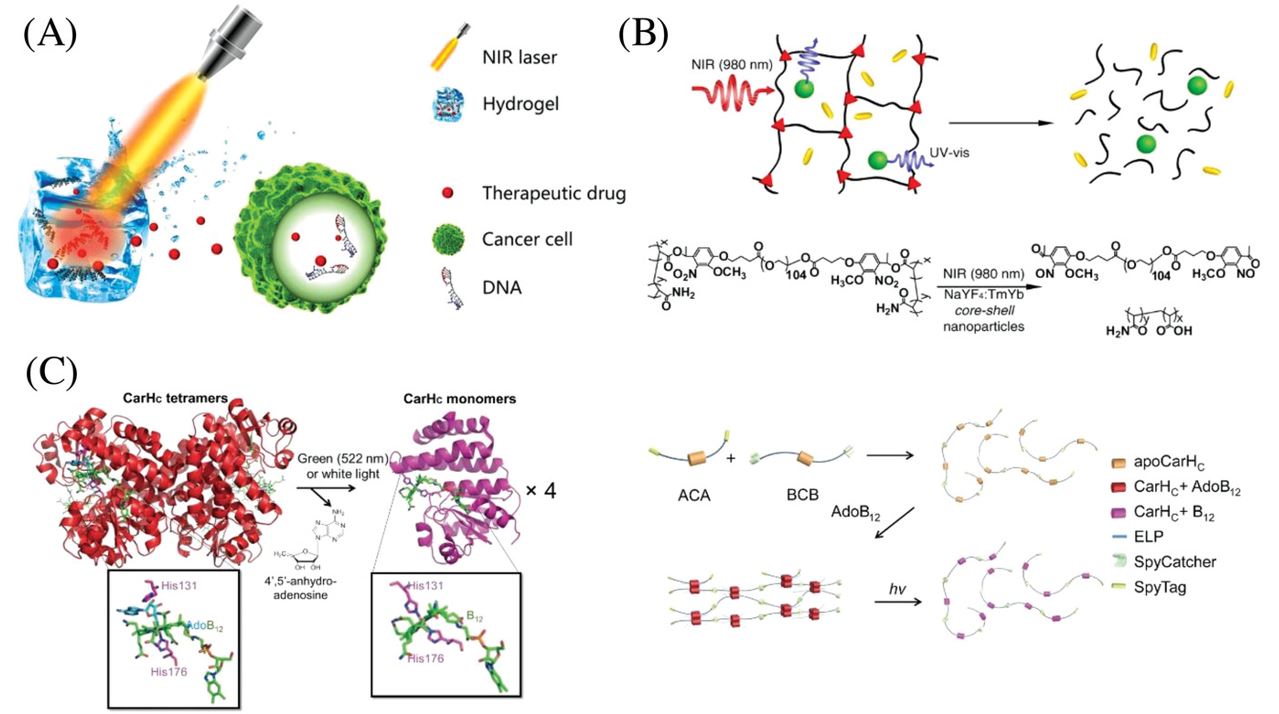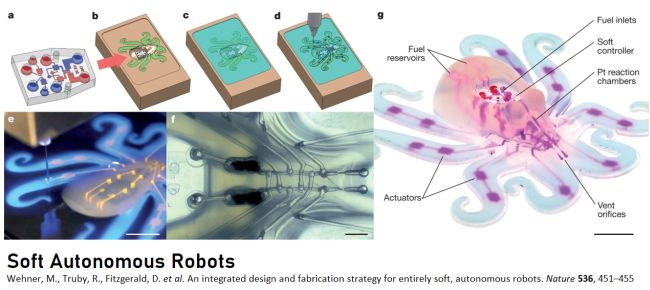For decades, people have successfully made materials that are capable of sensing external stimuli, of a variety of types, such as mechanical stress, electrical and magnetic field, temperature, chemical acidity, which have resulted in various applications including strain gauge, electronic compass, thermometer, pH meter, etc. The studies of these unique phenomena also lead to intensive research in new materials that are not only capable of detecting stimuli, but also can react to them, even they can “think” about the situation and “making decision” for reacting to it. These special engineering materials are called smart materials that can couple connections between different physical world, for example, shape memory alloy (SMA) can convert mechanical deformation into electrical signals and vice versa. The capability of novel smart materials has been intriguing in applications that require for materials capable of processing environmental information and autonomously adapt to what they sense.
Applications of smart materials include:
- hydrogels that are sensitive to light,
- Airfoils that change their aerodynamic profile,
- Vehicle with camouflage abilities,
- Bridges that detect and repair damages
- Robotic skins that can sense and actuate
- Prosthetics with a realistic sense of touch
- Microfluidic logic automatically regulating fluid flow
- Flexible hybrid electronic material with programmable strain sensing architecture
- Liquid metal-based flexible electronics
- Electro-active polymer gel for robotic movement activated by spatially varying electric fields
- Ionic polymer-metal composite artificial fins propelling robotic fish
- Flytrap made of light-responsive liquid-crystal elastomer
Lei Li, Johannes M. Scheiger and Pavel A. Levkin reported their progress and development of the new light-responsive hydrogels that can be used in various applications, such as biomaterials, medicine and soft robotics. The following illustration shows an application of controlled drug release based on photo-responsive hydrogels.

A group of researchers from Penn State University and U.S. Air Force have reported their latest advance in Nature. In the lab, they made a novel engineering material from conductive and insulating soft rubber materials. The new engineering material can sense the force applied to it and then “think” about what is happening. The capability of the smart material comes from the configurable circuits made of the rubber and rubber-silver interconnections that realize combinational logic. When the structure made of this smart material detects the force applied to it, such as a force of squeezing, it autonomously translate the mechanical stress into electrical signal that is then processed by the central control to generate output signal for reacting to the received stimuli.
The following figure illustrates how the combinational logic circuits can be generated through Boolean mathematics and kinematically reconfigurable electrical circuits.

The researchers also demonstrated how the smart material sense, compute and actuate of a mechanical integrated circuit (IC) shown in the below figure.

Reference
El Helou, C., Grossmann, B., Tabor, C.E. et al. Mechanical integrated circuit materials. Nature 608, 699–703 (2022). https://doi.org/10.1038/s41586-022-05004-5
Li, L., Scheiger, J. M., Levkin, P. A., Adv. Mater. 2019, 31, 1807333. https://doi.org/10.1002/adma.201807333
McEvoy MA, Correll N. Materials science. Materials that couple sensing, actuation, computation, and communication. Science. 2015 Mar 20;347(6228):1261689. https://doi.org/10.1126/science.1261689
Wehner, M., Truby, R., Fitzgerald, D. et al. An integrated design and fabrication strategy for entirely soft, autonomous robots. Nature 536, 451–455 (2016). https://doi.org/10.1038/nature19100
Zachary H. Nick, Christopher E. Tabor, Ryan L. Harne, Liquid metal microchannels as digital sensors in mechanical metamaterials, Extreme Mechanics Letters, Volume 40, 2020, 100871, ISSN 2352-4316, https://doi.org/10.1016/j.eml.2020.100871
Sears, N. C., Berrigan, J. D., Buskohl, P. R., & Harne, R. L. (2018). Flexible hybrid electronic material systems with programmable strain sensing architectures. Advanced Engineering Materials, 20(10), 1800499. https://doi.org/10.1002/adem.201800499
Mihoko Otake, Yoshiharu Kagami, Masayuki Inaba, Hirochika Inoue, Motion design of a starfish-shaped gel robot made of electro-active polymer gel, Robotics and Autonomous Systems, Volume 40, Issues 2–3, 2002, Pages 185-191, ISSN 0921-8890, https://doi.org/10.1016/S0921-8890(02)00243-9
Ye, Z., Hou, P., Chen, Z. et al. 2D maneuverable robotic fish propelled by multiple ionic polymer–metal composite artificial fins. Int J Intell Robot Appl 1, 195–208 (2017). https://doi.org/10.1007/s41315-017-0019-5
Wani, O., Zeng, H. & Priimagi, A. A light-driven artificial flytrap. Nat Commun 8, 15546 (2017). https://doi.org/10.1038/ncomms15546
Jin, H., Dong, E., Xu, M., Liu, C., Alici, G., & Jie, Y. (2016). Soft and smart modular structures actuated by shape memory alloy (SMA) wires as tentacles of soft robots. Smart Materials and Structures, 25(8), 085026. https://doi.org/10.1088/0964-1726/25/8/085026



